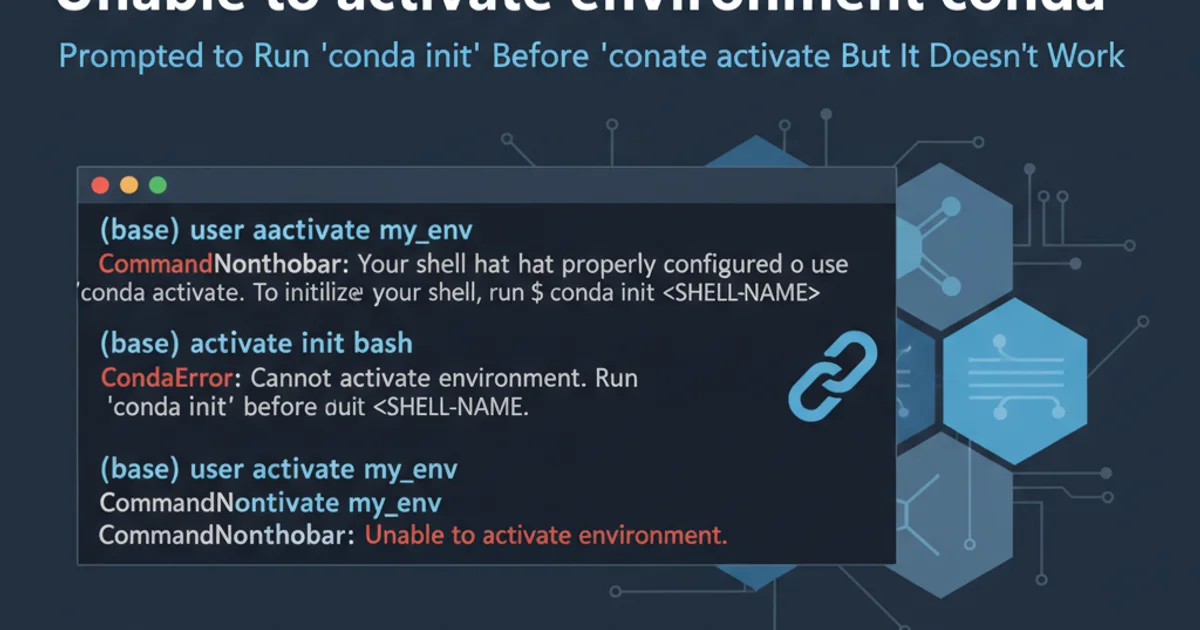How to get the EXIF or meta-data from images?
Categories:
Extracting EXIF and Metadata from Images

Learn how to programmatically access and parse EXIF and other metadata embedded in image files using popular programming languages like Java, PHP, and Python.
Image files often contain a wealth of hidden information beyond just the pixels that form the picture. This metadata, commonly stored in formats like EXIF (Exchangeable Image File Format), can include details about the camera model, date and time of capture, GPS coordinates, exposure settings, and much more. Accessing this data can be crucial for various applications, from photo management systems to forensic analysis. This article will guide you through the process of extracting this valuable information using Java, PHP, and Python.
Understanding Image Metadata Formats
Before diving into code, it's important to understand the common metadata formats you'll encounter. EXIF is the most prevalent for digital camera images, storing photographic-specific data. Other formats include IPTC (International Press Telecommunications Council) for journalistic information and XMP (Extensible Metadata Platform), a more flexible and extensible standard often used by Adobe products. Most libraries will abstract away the complexities of parsing these different formats, providing a unified interface to access the data.
flowchart TD
A[Image File] --> B{Metadata Present?}
B -->|Yes| C{Identify Format}
C --> D[EXIF]
C --> E[IPTC]
C --> F[XMP]
D --> G[Extract EXIF Tags]
E --> H[Extract IPTC Data]
F --> I[Extract XMP Properties]
G --> J[Process Data]
H --> J
I --> J
B -->|No| K[No Metadata Found]
J --> L[Output/Use Data]General workflow for extracting image metadata.
Extracting Metadata in Java
Java offers several libraries for EXIF and metadata extraction. The metadata-extractor library by Drew Noakes is a popular and robust choice, supporting a wide range of metadata types beyond just EXIF. It provides a clean API to read directories and tags.
import com.drew.imaging.ImageMetadataReader;
import com.drew.metadata.Directory;
import com.drew.metadata.Metadata;
import com.drew.metadata.Tag;
import java.io.File;
import java.util.Arrays;
public class ExifExtractor {
public static void main(String[] args) {
File imageFile = new File("path/to/your/image.jpg");
try {
Metadata metadata = ImageMetadataReader.readMetadata(imageFile);
for (Directory directory : metadata.getDirectories()) {
System.out.println("-- " + directory.getName() + " --");
for (Tag tag : directory.getTags()) {
System.out.println(String.format("[%s] - %s = %s",
directory.getName(), tag.getTagName(), tag.getDescription()));
}
if (directory.hasErrors()) {
for (String error : directory.getErrors()) {
System.err.println("ERROR: " + error);
}
}
}
} catch (Exception e) {
e.printStackTrace();
}
}
}
metadata-extractor library to your project's dependencies (e.g., Maven or Gradle). For Maven, add: <dependency><groupId>com.drewnoakes</groupId><artifactId>metadata-extractor</artifactId><version>2.18.0</version></dependency>Extracting Metadata in Python
Python offers excellent libraries for image manipulation, including metadata extraction. The Pillow library (a friendly fork of PIL - Python Imaging Library) is a de-facto standard for image processing and includes basic EXIF tag reading. For more comprehensive EXIF data, piexif or exifread are popular choices. exifread is particularly good for reading a wide range of EXIF tags.
import exifread
def get_exif_data(image_path):
with open(image_path, 'rb') as f:
tags = exifread.process_file(f)
if not tags:
print(f"No EXIF data found in {image_path}")
return
for tag in tags.keys():
if tag not in ('JPEGThumbnail', 'TIFFThumbnail', 'Filename', 'EXIF MakerNote'):
print(f"{tag}: {tags[tag]}")
if __name__ == "__main__":
image_file = "path/to/your/image.jpg"
get_exif_data(image_file)
exifread using pip: pip install exifread. For Pillow, use pip install Pillow.Extracting Metadata in PHP
PHP has built-in functions to read EXIF data, primarily exif_read_data(). This function parses the EXIF headers from an image file and returns an associative array of the data. It's straightforward to use but requires the exif extension to be enabled in your php.ini.
<?php
function getExifData(string $imagePath): void
{
if (!extension_loaded('exif')) {
echo "Error: PHP EXIF extension is not enabled. Please enable it in php.ini.\n";
return;
}
if (!file_exists($imagePath)) {
echo "Error: Image file not found at {$imagePath}\n";
return;
}
$exif = exif_read_data($imagePath, 'ANY_TAG', true);
if ($exif === false) {
echo "No EXIF data found in {$imagePath}\n";
return;
}
echo "EXIF Data for {$imagePath}:\n";
foreach ($exif as $key => $section) {
echo " {$key}:\n";
foreach ($section as $name => $val) {
echo " {$name}: {$val}\n";
}
}
}
$imageFile = "path/to/your/image.jpg";
getExifData($imageFile);
?>
exif extension is enabled in your php.ini file. Look for extension=exif and uncomment it if it's commented out, then restart your web server or PHP-FPM.Extracting metadata from images is a powerful capability that can enhance various applications. Whether you're building a photo gallery, an asset management system, or performing data analysis, understanding how to access this embedded information is a valuable skill. Always handle image files and their metadata responsibly, especially when dealing with personal information like GPS coordinates.